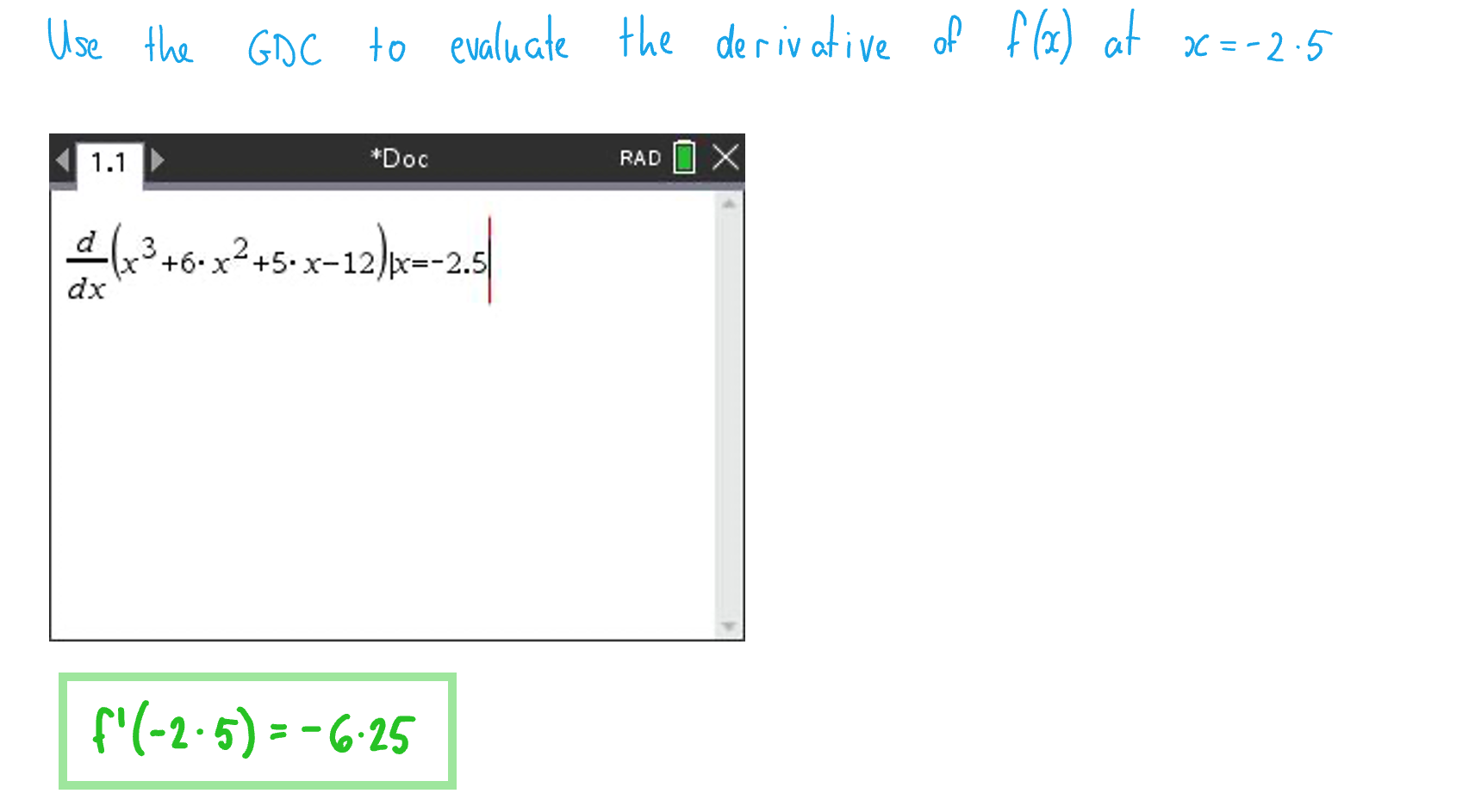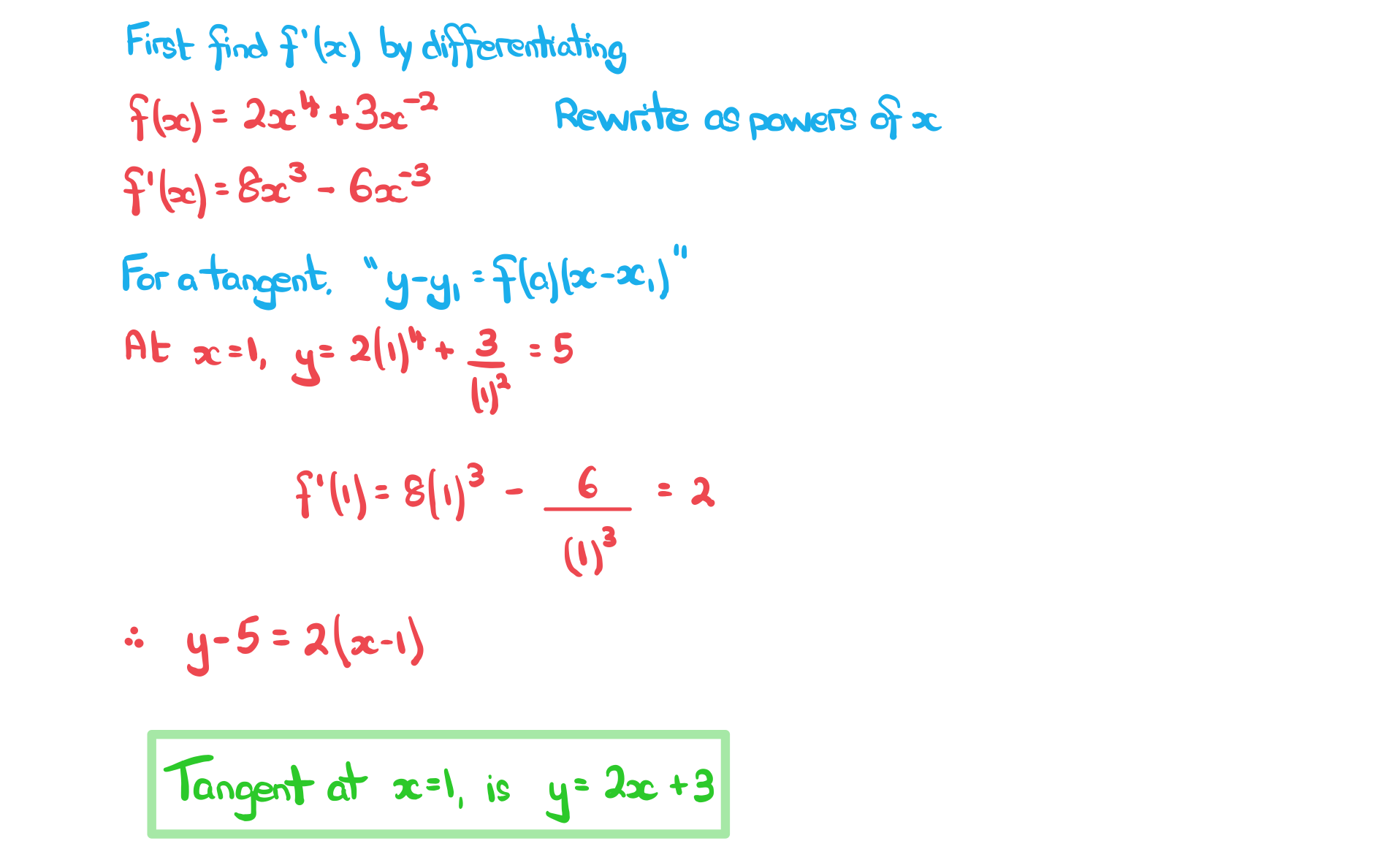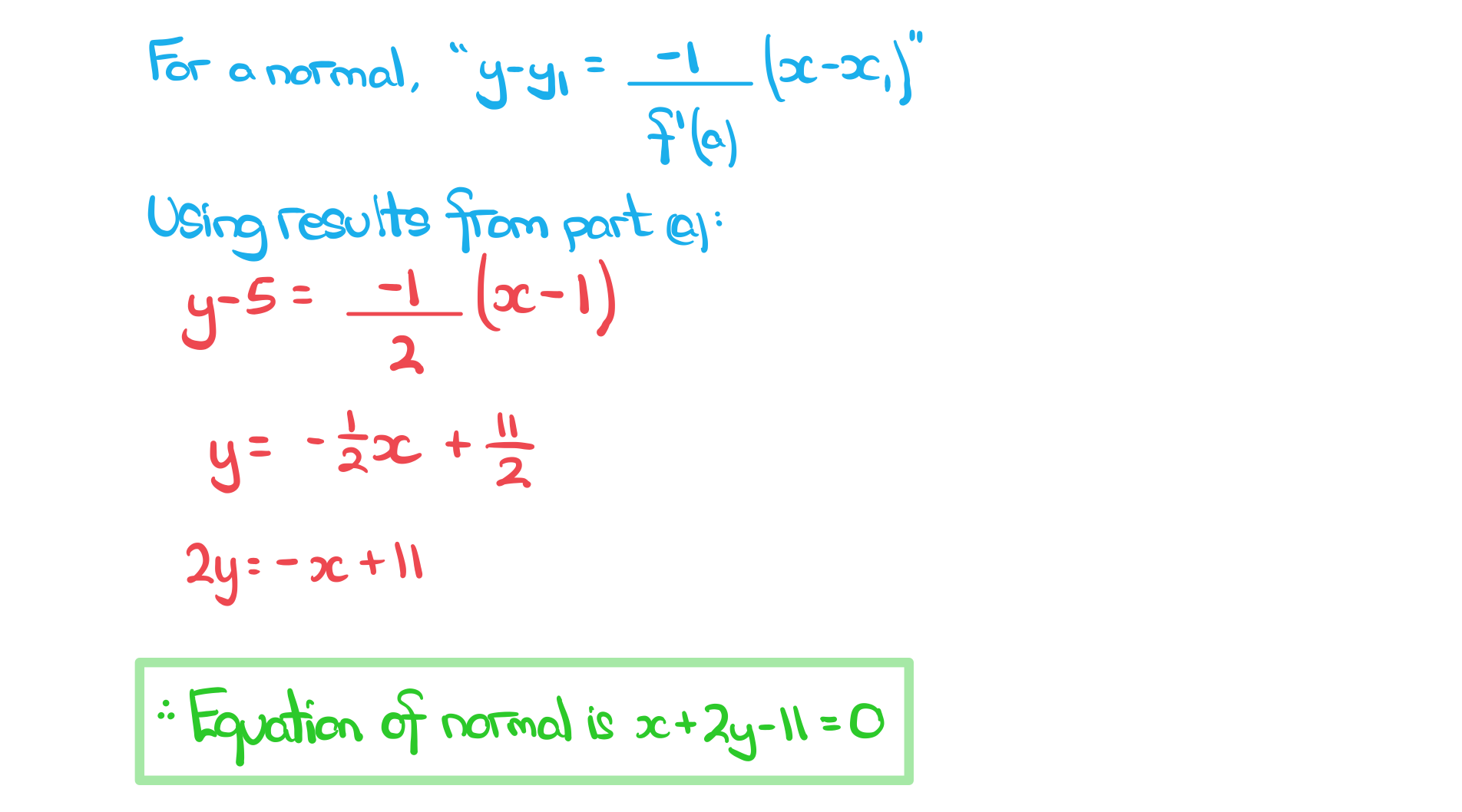Applications of Differentiation (DP IB Applications & Interpretation (AI)) : Revision Note
Did this video help you?
Finding Gradients
How do I find the gradient of a curve at a point?
The gradient of a curve at a point is the gradient of the tangent to the curve at that point
Find the gradient of a curve at a point by substituting the value of
at that point into the curve's derivative function
For example, if
then
and the gradient of
when
is
and the gradient of
when
is
Although your GDC won't find a derivative function for you, it is possible to use your GDC to evaluate the derivative of a function at a point, using
Worked Example
A function is defined by .
(a) Find .

(b) Hence show that the gradient of when
is 20.

(c) Find the gradient of when
.

Did this video help you?
Increasing & Decreasing Functions
What are increasing and decreasing functions?
A function,
, is increasing if
This means the value of the function (‘output’) increases as
increases
A function,
, is decreasing if
This means the value of the function (‘output’) decreases as
increases
A function,
, is stationary if

How do I find where functions are increasing, decreasing or stationary?
To identify the intervals on which a function is increasing or decreasing
STEP 1
Find the derivative f'(x)
STEP 2
Solve the inequalities
(for increasing intervals) and/or
(for decreasing intervals)
Most functions are a combination of increasing, decreasing and stationary
a range of values of
(interval) is given where a function satisfies each condition
e.g. The function
has derivative
so
is decreasing for
is stationary at
is increasing for
Worked Example
a) Determine whether is increasing or decreasing at the points where
and
.

b) Find the values of for which
is an increasing function.

Did this video help you?
Tangents & Normals
What is a tangent?
At any point on the graph of a (non-linear) function, the tangent is the straight line that touches the graph at only that point
Its gradient is given by the derivative function

How do I find the equation of a tangent?
To find the equation of a straight line, a point and the gradient are needed
The gradient,
, of the tangent to the function
at
is
Therefore find the equation of the tangent to the function
at the point
by substituting the gradient,
, and point
into
, giving:
(You could also substitute into
but it is usually quicker to substitute into
)
What is a normal?
At any point on the graph of a (non-linear) function, the normal is the straight line that passes through that point and is perpendicular to the tangent

How do I find the equation of a normal?
The gradient of the normal to the function
at
is
Therefore find the equation of the normal to the function
at the point
by using
Examiner Tips and Tricks
You are not given the formula for the equation of a tangent or the equation of a normal
But both can be derived from the equations of a straight line which are given in the formula booklet
Worked Example
The function is defined by
a) Find an equation for the tangent to the curve at the point where
, giving your answer in the form
.

b) Find an equation for the normal at the point where , giving your answer in the form
, where
,
and
are integers.

Did this video help you?
Local Minimum & Maximum Points
What are local minimum and maximum points?
Local minimum and maximum points are two types of stationary point
The gradient function (derivative) at such points equals zero
i.e.
A local minimum point,
will be the lowest value of
in the local vicinity of the value of
The function may reach a lower value further afield
Similarly, a local maximum point,
will be the greatest value of
in the local vicinity of the value of
The function may reach a greater value further afield
The graphs of many functions tend to infinity for large values of
(and/or minus infinity for large negative values of)
The nature of a stationary point refers to whether it is a local minimum or local maximum point
How do I find the coordinates and nature of stationary points?
The instructions below describe how to find local minimum and maximum points using a GDC on the graph of the function
.
STEP 1
Plot the graph of
Sketch the graph as part of the solution
STEP 2
Use the options from the graphing screen to “solve for minimum”
The GDC will display the and
coordinates of the first minimum point
Scroll onwards to see there are anymore minimum points
Note down the coordinates and the type of stationary point
STEP 3
Repeat STEP 2 but use “solve for maximum” on your GDC
In STEP 2 the nature of the stationary point should be easy to tell from the graph
a local minimum changes the function from decreasing to increasing
the gradient changes from negative to positive
a local maximum changes the function from increasing to decreasing
the gradient changes from positive to negative

Worked Example
Find the stationary points of, and state their nature.


You've read 0 of your 5 free revision notes this week
Unlock more, it's free!
Did this page help you?
